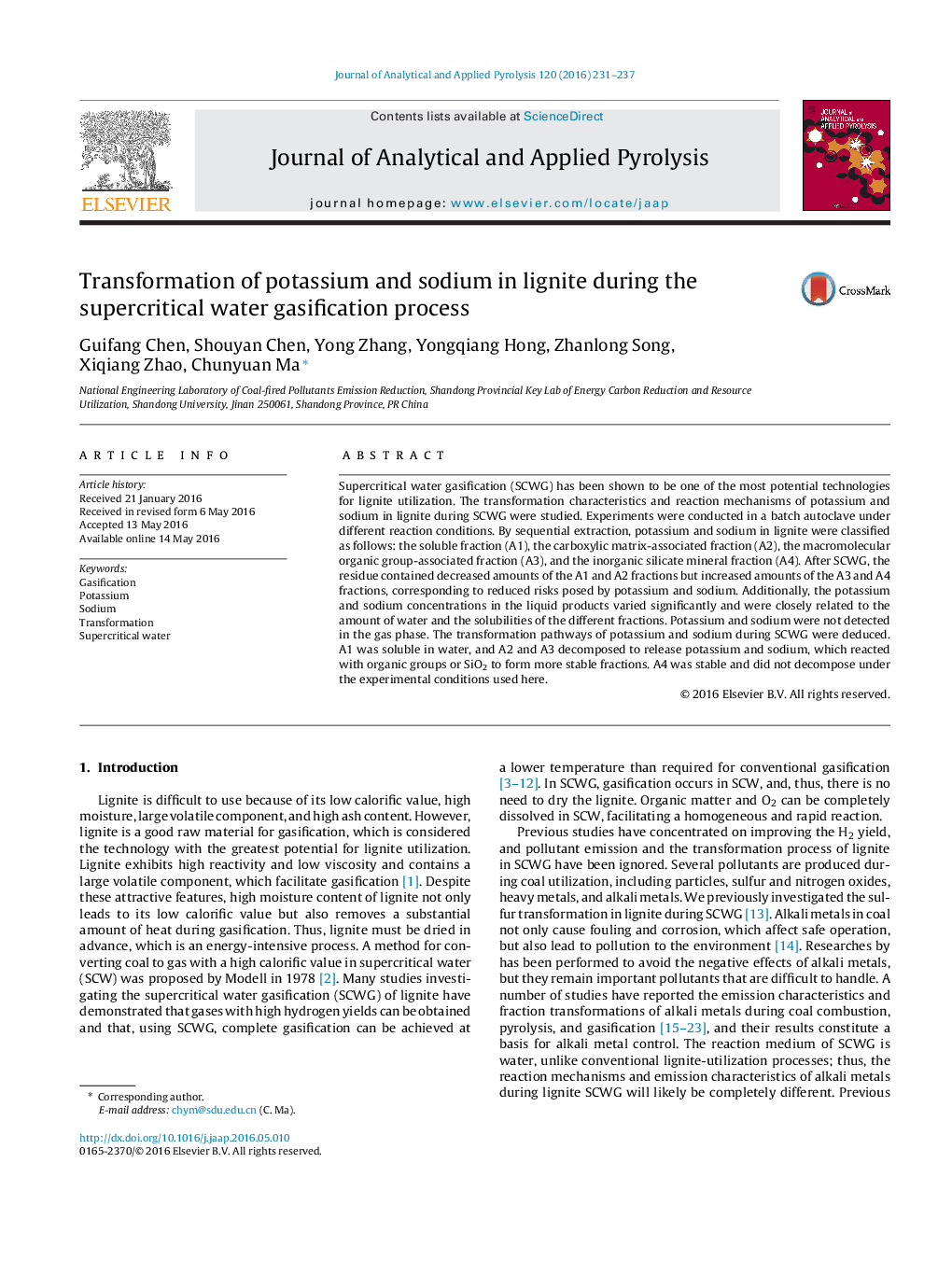| Article ID | Journal | Published Year | Pages | File Type |
|---|---|---|---|---|
| 1196547 | Journal of Analytical and Applied Pyrolysis | 2016 | 7 Pages |
•Distribution of potassium and sodium in products was illustrated for SCWG.•Potassium and sodium in lignite were classified as four fractions by sequential extraction.•Transformation paths of potassium and sodium were deduced during the SCWG process.
Supercritical water gasification (SCWG) has been shown to be one of the most potential technologies for lignite utilization. The transformation characteristics and reaction mechanisms of potassium and sodium in lignite during SCWG were studied. Experiments were conducted in a batch autoclave under different reaction conditions. By sequential extraction, potassium and sodium in lignite were classified as follows: the soluble fraction (A1), the carboxylic matrix-associated fraction (A2), the macromolecular organic group-associated fraction (A3), and the inorganic silicate mineral fraction (A4). After SCWG, the residue contained decreased amounts of the A1 and A2 fractions but increased amounts of the A3 and A4 fractions, corresponding to reduced risks posed by potassium and sodium. Additionally, the potassium and sodium concentrations in the liquid products varied significantly and were closely related to the amount of water and the solubilities of the different fractions. Potassium and sodium were not detected in the gas phase. The transformation pathways of potassium and sodium during SCWG were deduced. A1 was soluble in water, and A2 and A3 decomposed to release potassium and sodium, which reacted with organic groups or SiO2 to form more stable fractions. A4 was stable and did not decompose under the experimental conditions used here.
